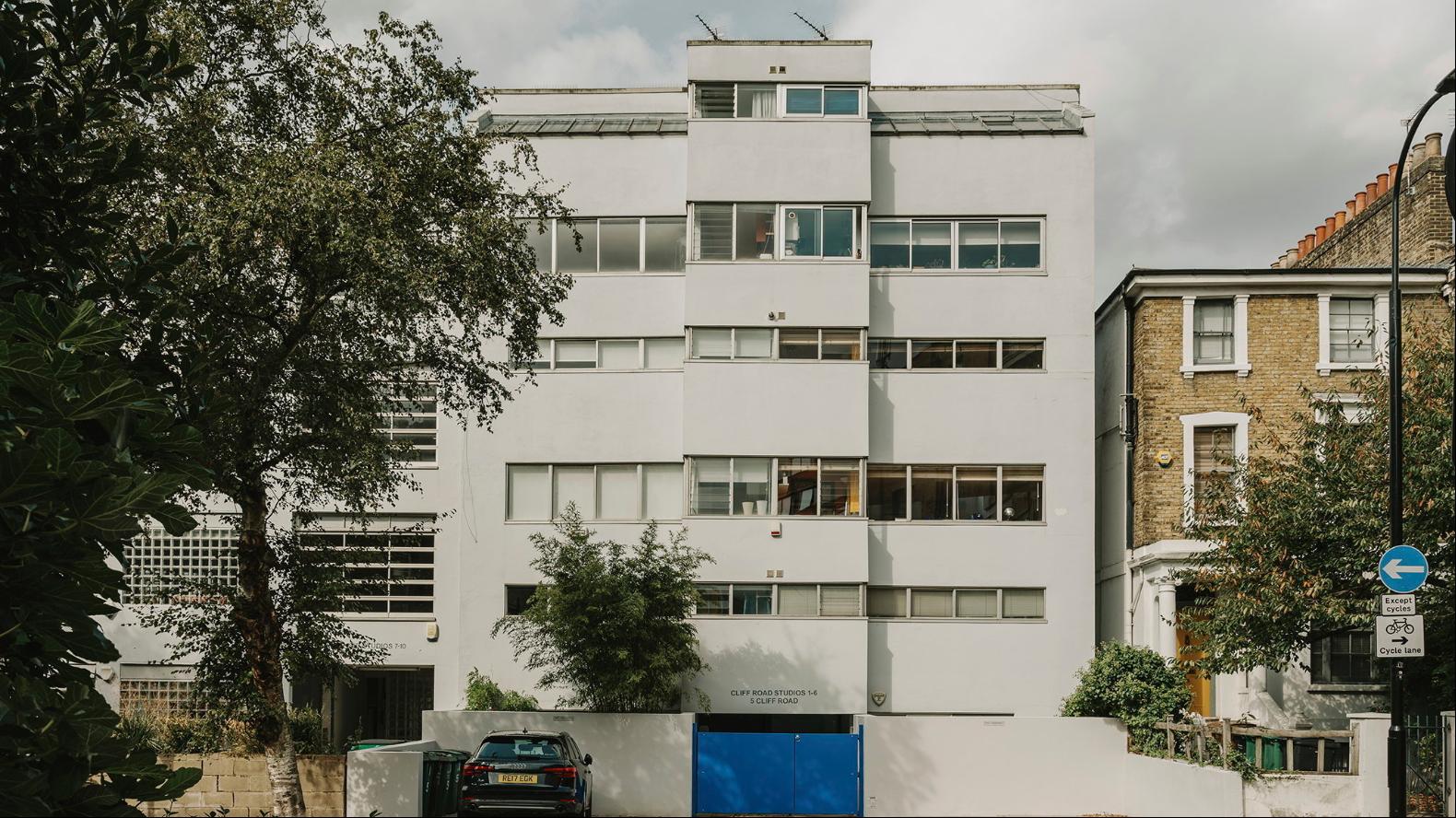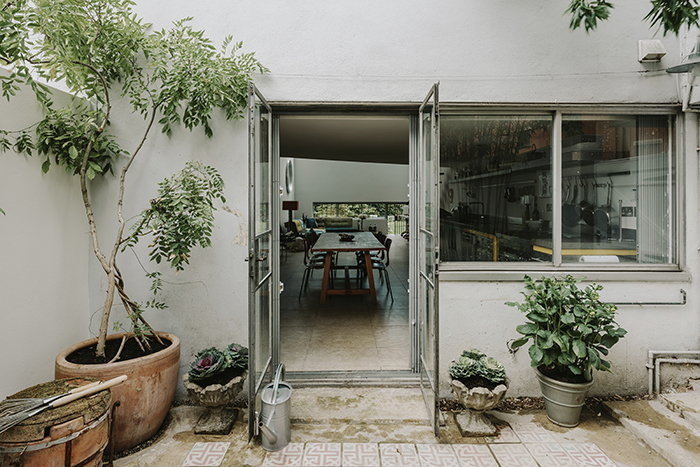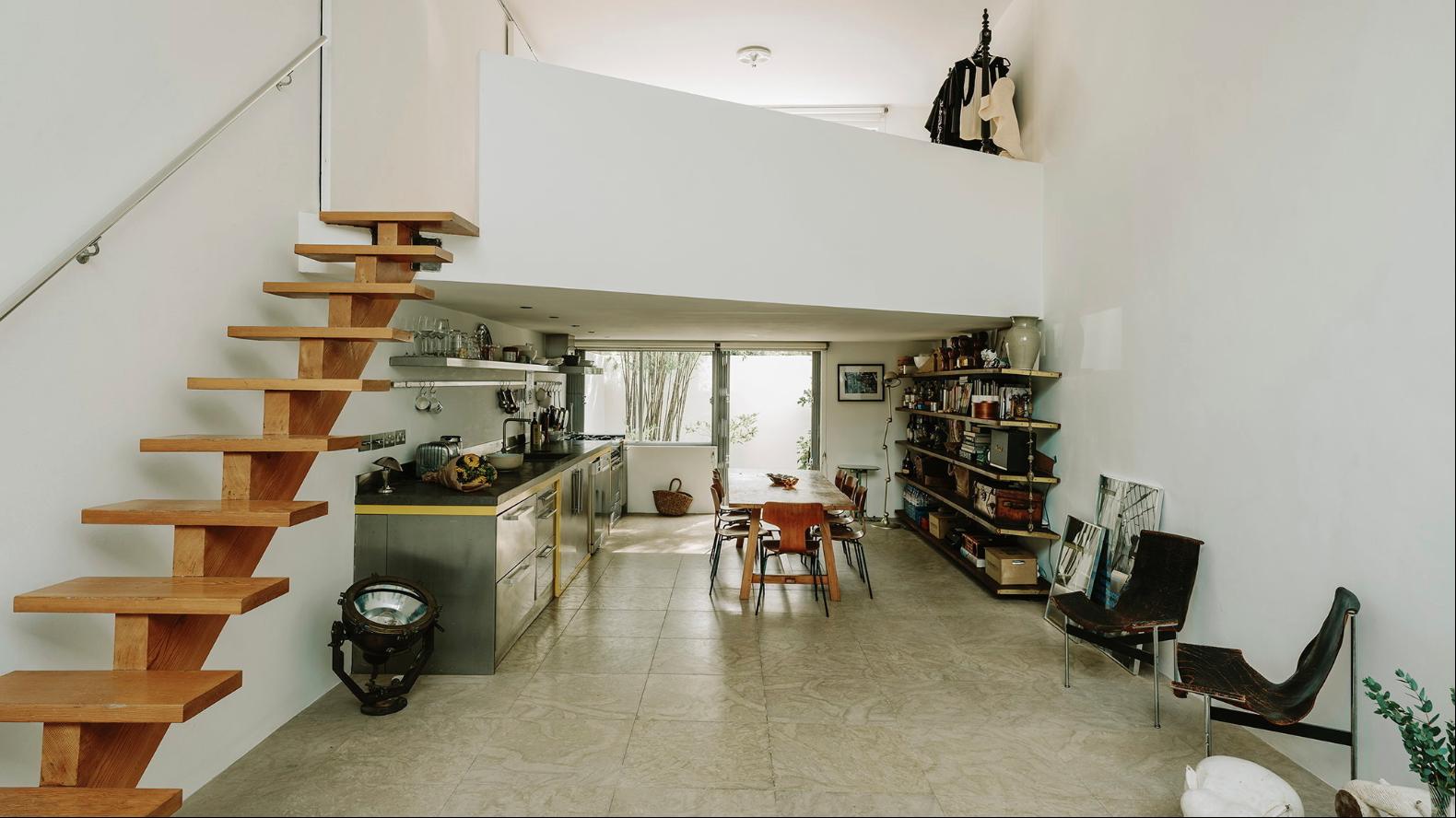
By Edwin Heathcote
Not many buildings by Georgie Wolton survive. The studios she built on Cliff Road, at the southern, King’s Cross end of Camden, are some of the best. The building looks appreciate a classic modernist apartment block: white furnish, ribbon windows — it could be something in Prague from the early 1930s. In fact, it dates from 1968, part of a wave of superb modern apartment buildings in Camden, most of which, unlike this one, were built by the council.

The architect lived nearby and, although hers is not a name much known outside architecture circles, Wolton can claim to be one of the most consequential of British women architects. Born Georgina Cheesman in 1934, she was a co-founder in 1963 of Team 4, often referred to as an architectural supergroup, its other founders including Richard Rogers and Norman Foster, as well as Georgie’s sister, Wendy, who later married Foster. As the only qualified architect at the time, Wolton’s certification allowed the others to work legally. She left after a few months, but it was her money that bankrolled and enabled the practice in its early days.
Wolton was a curious kind of architect. Her inheritance meant she had no real imperative to work for others, and her buildings were mostly for herself or for friends. They were often quirky, experimental, slightly shonkily detailed and very individual. The most notable was her 1969 Fieldhouse in Surrey, a villa in glass and rusted Corten steel (probably Britain’s first real Corten building) that was profoundly influenced by American modernism.
Her own house in north London (1976) — a simple, low-slung work with wonderful light — was listed by Historic England in November, and illustrates a few of the deficiencies in her design method. She was not the most practical of architects and her buildings famously often suffered from leaks, draughts, cracks and overheating (as, to be fair, did many of the best modernist houses), but she still lived there (rather reclusively) till her death in 2021.

Wolton gradually abandoned architecture in the 1970s and turned her hand to landscape design (where it mattered less if things leaked). She seemed happier here, designing the gardens of Rogers’s River Cafe and a roof terrace at his Chelsea house as well as gardens for Keble College and the University of East Anglia.
This neat one-bedroom duplex in Cliff Road Studios is on the market for £945,000. The flats were intended for use as artists’ studios (one of the early buyers was constructivist sculptor Naum Gabo), which explains the high-level north light window at the rear. It’s a simple scheme, with a double-height living space and a kitchen on the ground floor leading to a communal garden via a weirdly undersized door, through which you need to stoop to exit. It also has a private terrace (one of only two in the building) and a mezzanine bedroom with generous storage.

Bright, airy and tall, the double-height space is set off by a flight of stairs floating free of the wall and without a handrail to the edge. It’s not something you’d be able to get away with building today, but it does impart a certain sculptural presence and casts a wonderful shadow.
The property is not cheap, and it’s in the slightly less desirable end of Camden, but these are apartments of great clarity and elegance by one of the few women architects to make a real impact in an era dominated by men. That has to be worth a little supplement.
Images: The Modern House



